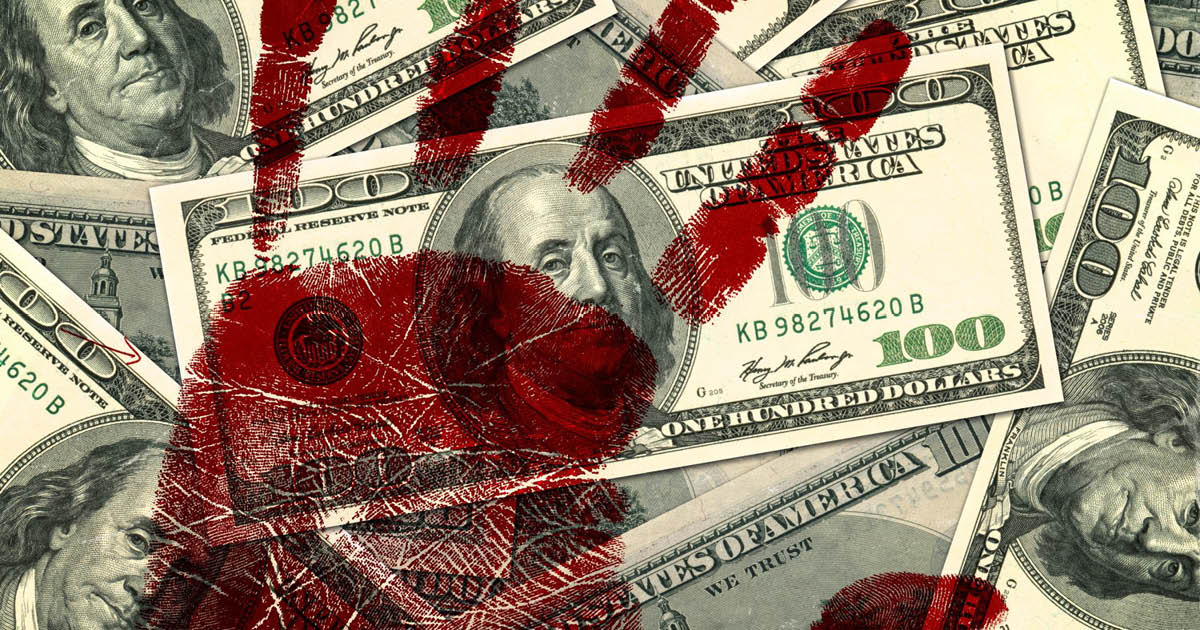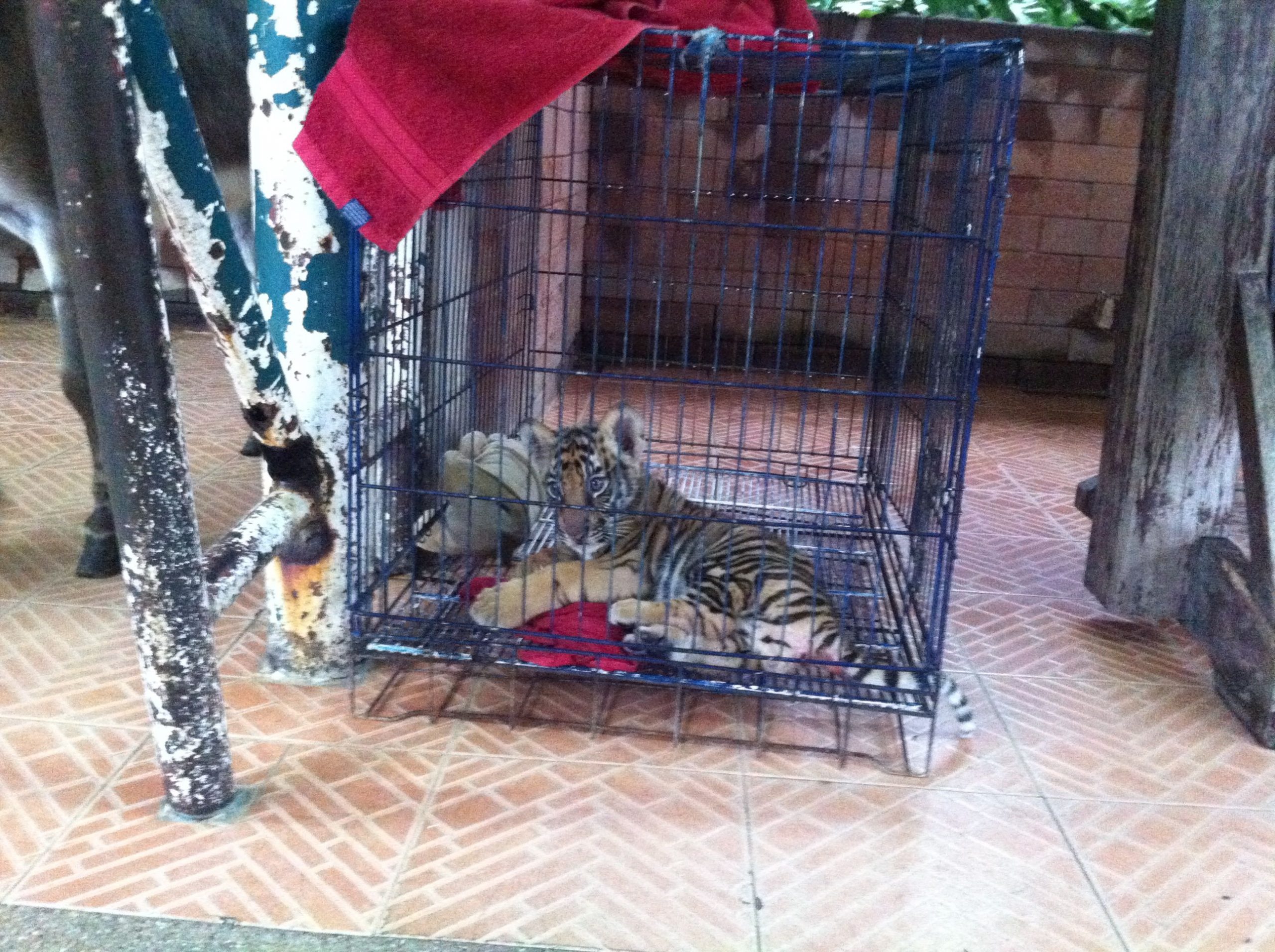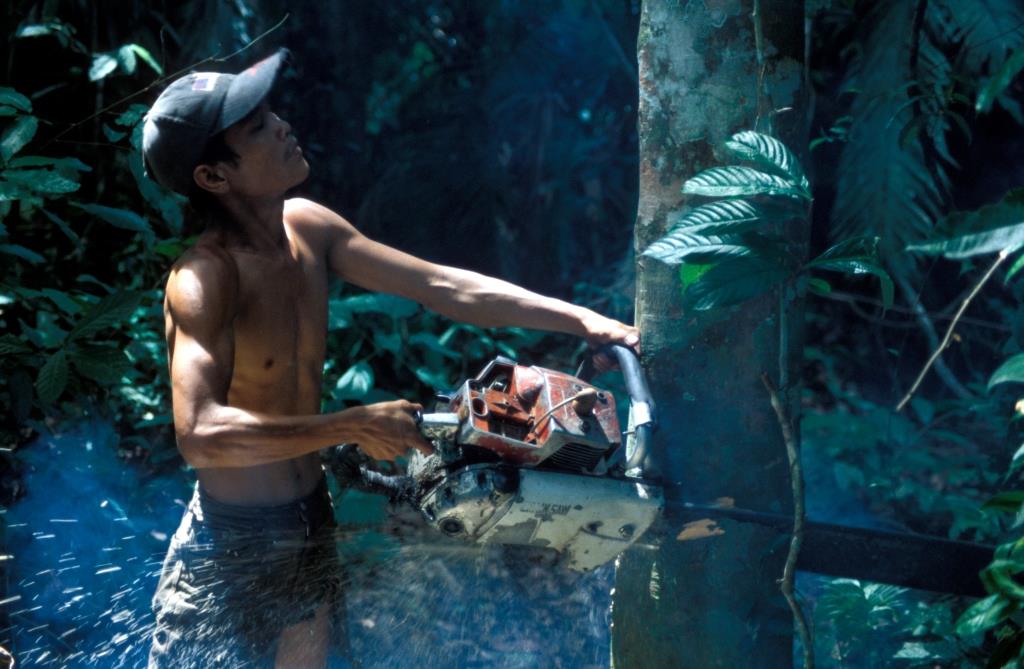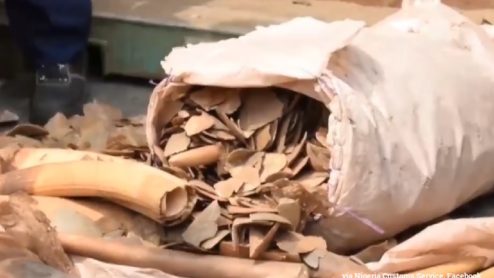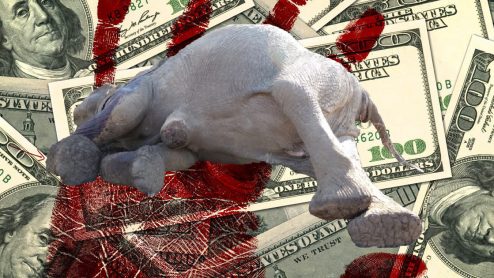Is the link between environmental crime and corruption getting the attention it deserves?
In the wake of the ninth session of the Conference of the States Parties to the UN Convention Against Corruption last month, has enough been done to combat the corruption linked to environmental crime?
EIA has spent decades investigating all facets of environmental crime, including the role of illicit financial flows in allowing the trade in endangered and protected species to continue.
As a result, it has become increasingly evident to us the significance of corruption in facilitating these crimes.
A 2019 World Bank report estimated that the true economic impact of illegal logging, fishing and wildlife trade could be in excess of $1 trillion.
The corruption associated with these crimes, while financially damaging, has a detrimental impact on governance and weakens the rule of law – and this is in addition to the damage done to the environment by the crimes themselves, including habitat destruction and biodiversity loss, as well as reducing our ability to meet several of the UN Sustainable Development Goals.
The point at which corruption and environmental crime overlap is in the movement of illicit goods along the trade chain, from sourcing and transit through to consumption. It takes many forms, including:
- bribery of high-ranking officials to obtain concessions and permits for access to land and forests;
- bribery of officials tasked with protecting wildlife and forests to get access to protected species;
- bribery of port and airport officials, customs officers, law enforcement and port operators at all stages of the trade chain to allow products to bypass scanning and security processes;
- corruption within police and investigative units, allowing traders to buy their way out of arrests and prosecution;
- bribery or collusion with staff in banks and other financial institutions, allowing large transactions to be processed without being flagged.
During the past six years, the international community has increasingly recognised the relationship between environmental crime and corruption in multiple international forums, including the 2016 Convention on International Trade in Endangered Species , the 2019 UN Convention Against Corruption, the 2020 UN Convention Against Transnational Organised Crime and priorities under the Financial Action Task Force (FATF).
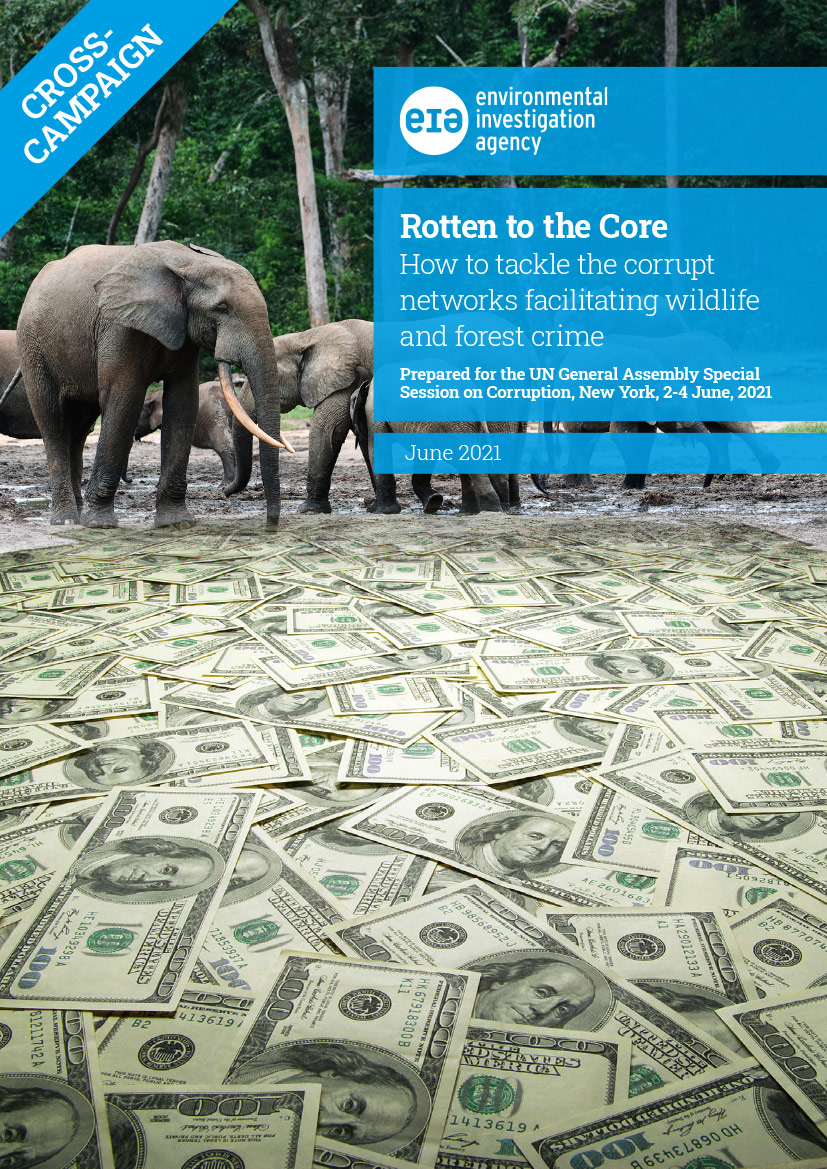 EIA is a long-time advocate for greater action on this matter and in June 2021 we published Rotten to the Core – How to tackle the corrupt networks facilitating wildlife and forest crime ahead of the UN General Assembly special session on corruption, detailing these connections.
EIA is a long-time advocate for greater action on this matter and in June 2021 we published Rotten to the Core – How to tackle the corrupt networks facilitating wildlife and forest crime ahead of the UN General Assembly special session on corruption, detailing these connections.
We repeated this call for action at last month’s Conference of the States Parties to the UN Convention against Corruption (UNCAC CoSP), which was attended, both in-person and virtually, by more than 2,000 people, included delegates from governments, regional and intergovernmental organisations, civil society, academia and the private sector, representing more than 150 countries in total.
More than 70 side events were organised on the margins of the event, including numerous sessions highlighting the link between environmental crime and corruption.
The conference concluded with the adoption of the Sharm El-Sheikh Declaration, which focuses on fighting corruption in times of crisis.
Seven other resolutions were also adopted, including those addressing key issues such as beneficial ownership in asset recovery, regional and international cooperation and education and youth empowerment, as well as advancing commitments made at previous sessions to enhance prevention and to strengthen cooperation between supreme audit institutions and anti-corruption authorities. A resolution to follow up on the political declaration from the first-ever UN General Assembly Special Session against corruption in June was also adopted.
As more details of these are made available, we can better understand how they can be deployed to combat corruption related to environmental crime.
However, while there were numerous successes at the CoSP, it was overshadowed by the exclusion of eight prominent civil society organisations due to objections raised by Turkey – the CoSP plenary failed to overturn these objections, despite numerous countries speaking out in support of the affected NGOs.
It is incidents like this that highlight the need for increased efforts to protect and amplify the voices of civil society in all matters relating to corruption. Despite growing international action, many cases involving both environmental crime and corruption are not fully investigated and remain unpunished.
Stronger action needs to be taken to ensure greater accountability and transparency, for which more robust measures need to be put in place. Initially, this would involve safeguarding the role of civil society, whistle-blowers and the media in reporting on and uncovering corruption.
Beyond this, governments need to strengthen laws and procedures to tackle the corruption linked to environmental crime, as well as complying with their international obligations. These include increasing use of anti-corruption laws at a national level and improving the public availability of information with regards to beneficial ownership registers and company registers.
In doing so, they would create a set of conditions which ensures corruption cannot thrive, while simultaneously preserving the world’s natural resources and restoring civil societies’ faith in governance.

